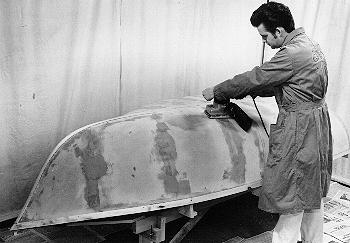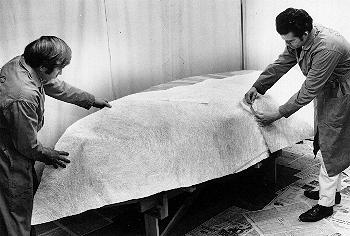

Fig. 9 If the final surface on the foam has any discontinuities between panels, it may be necessary to even out the surface with resin putty filler. Also, any gaps should be fitted with scrap slivers of foam. Minor dents or indentations of the foam can sometimes be corrected with a spot application of heat as the foam will often reform to its original surface. Otherwise, resin putty filler should be used to even out the surface, although such a procedure should be kept to a minimum. These areas should be be sanded smooth, taking care not to gouge into the adjoining foam areas. The hull surfaces should be as fair and smooth at this point as possible, for any defects will be directly transferred to the final hull surface where correction will be tedious. Wax must be applied to the form members in any areas where the parting film is inadvertently removed.

Fig. 10 The first layer of fiberglass material applied to the foam is usually some type of chopped strand mat. The mat pieces should be cut to rough oversize initially. Joints in adjacent mat pieces are normally butted, however, along areas such as the keel centerline, it is common for the mat on one side of the hull to overlap onto the mat of the other side for extra strength and fiberglass build-up. Where hull contours change rapidly, the mat may not conform to the surface without "bunching". Where this occurs, tear a V-shaped gore by hand thereby feathering the edges to keep from building up a double thickness of mat at these points. Continue